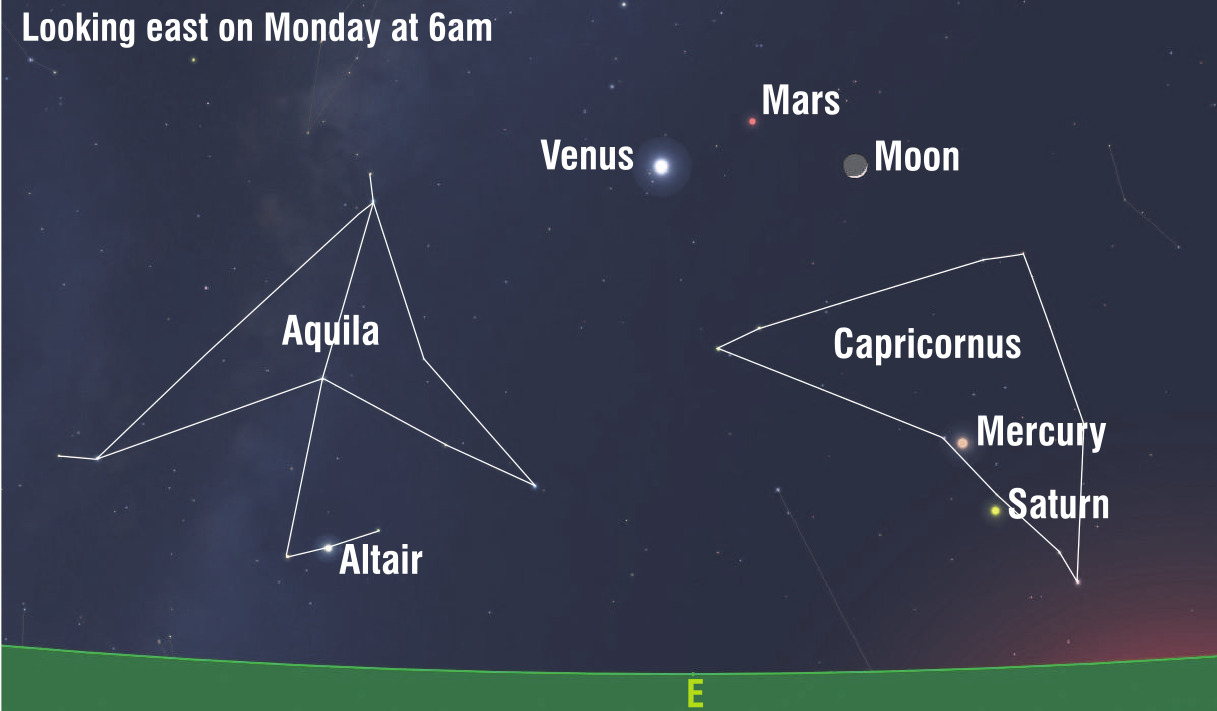
The planetary gathering is visible all week. However, to my mind Monday will be the best day to head out. On that morning the 11% illuminated waning crescent moon will join the cosmic conclave.
On Monday morning the moon forms the rightmost vertex of a celestial triangle incorporating Venus and Mars. Interestingly, while Mars and Venus are on the outskirts of the constellation Sagittarius, the Moon is actually across an astronomical border in the neighbouring constellation Capricornus.
Venus forms the planetary pyramid’s left vertex, with orange-red Mars at the apex. Venus is stunning at the moment. Close to its maximum brilliance this year, the blazing white planet is bright enough to cast shadows. Mars is much fainter than its solar system sibling. By my reckoning, at the moment the red planet is nearly two hundred and thirty times dimmer than Venus! The reason Mars is much dimmer is twofold. Firstly it is just under 300million kilometres away from Earth, while the distance to Venus is just over 77million kilometres. The second reason Mars is harder to see than Venus is that it reflects less light. The dark, rocky surface of Mars reflects just over 15% of the sun’s light, whereas the clouds of Venus reflect roughly three-quarters of the incoming light from the sun.
Once you have had your fill of the moon, Mars and Venus, you should also try to spot Mercury and Saturn. They are much lower in the sky. While the moon and Venus are nearly 25 degrees above the horizon an hour before dawn, the altitude of Mercury is 10 degrees and Saturn is just seven degrees. Over the next few mornings, this planetary pairing will get closer and closer. On Thursday their separation will be just under a degree.
- Ian Griffin












